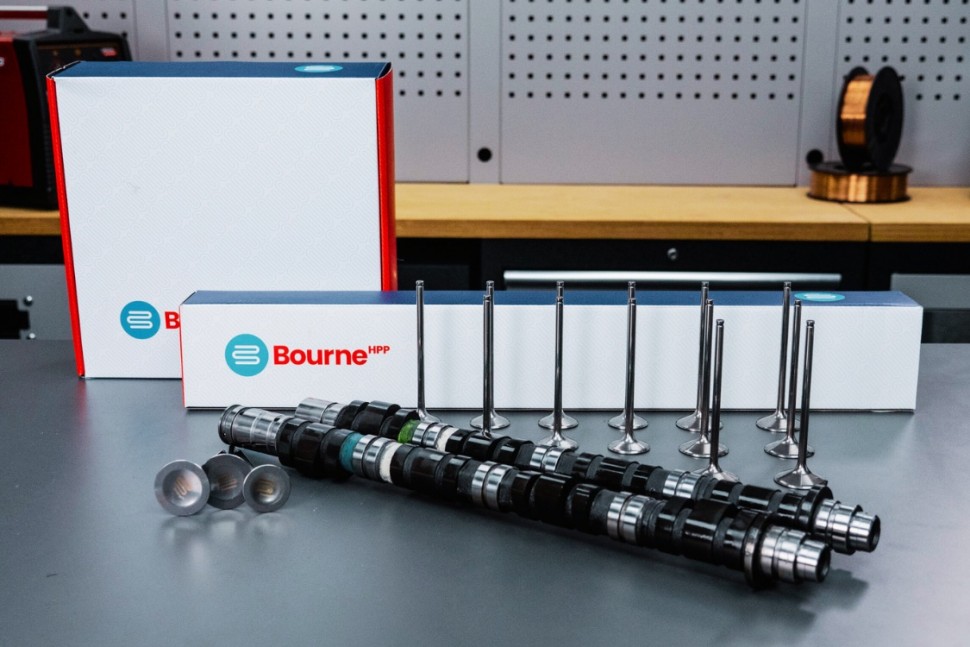| 00:00 |
- The next step of our process is to configure our base tables and there isn't a huge amount of work to do here, particularly given we are working from a base map so Haltech have got this right from the get go.
|
| 00:12 |
But it's always a good idea just to ensure that that is the case and that you aren't going to be starting with any errors baked in to your cam control.
|
| 00:20 |
So let's dive into our software and we'll have a look at what we need to know.
|
| 00:24 |
At the moment we're on our main fuel table or VE table as it actually is so we can see on the vertical axis here we've got our engine RPM and on the horizontal axis we've got our load.
|
| 00:35 |
Now this is listed as fuel-load and it's in kPa.
|
| 00:39 |
For all intents and purposes, this is inlet manifold pressure.
|
| 00:43 |
This is the important part that we need to understand here because of course as we've already learned we want to make sure that we match that load axis in our cam target map.
|
| 00:54 |
So let's head over to our cam target maps and we can scroll down here until we get to those.
|
| 00:58 |
So we've got our intake target here, target angle and we'll click on that table.
|
| 01:03 |
And we can see that we do in fact already have exactly the same load axis, we'll confirm that for our exhaust target angle table as well and yep we can see that that's exactly the same.
|
| 01:14 |
Now at the same point we also want to just take note of the resolution in this table and again as we've discussed, we don't need particularly tight resolution here and that's only going to end up making more work for us, what you can see here is that we've got this axis set up with break points about every 25 kPa and again don't worry too much about this, it's always easiest to start with coarse break points, you can come back and refine these if you find that you need a little bit more resolution either with respect to the load axis or the RPM axis at a later point and the ECU will automatically interpolate these so it's not like you're going to have to go back and retune the entire table.
|
| 01:55 |
On our RPM axis we can see that essentially we've got break points every 500 RPM, we've got a slightly tighter resolution down here around idle although typically 750 RPM, around about our idle speed, I wouldn't be using cam target here, I wouldn't be moving the cam timing due to the relatively low oil pressure we've got.
|
| 02:17 |
Through the mid range here we can see that we do actually spread our targets a little bit wider, 6000, 5000, 4000 RPM so we're looking at 1000 RPM steps but again perfectly good starting point and we can refine this if we find the need.
|
| 02:32 |
In terms of how we do this, if we found out that our load axis wasn't correct for example, or you need to change the resolution, we can come up here to our axis, table axis setup icon and first of all in terms of changing the load value, so we can see here the axis 1 here, fuel-load is our axis so if that wasn't the case we can come in here and select the axis that we want to use in this case of course if we just type in fuel we're going to auto fill and fuel-load comes up there, we'd simply select that so that's how we change the axis, the input for our axis if required.
|
| 03:13 |
Likewise we can choose to change our break points, this is as simple here as just manipulating the numbers in there, if we wanted to change this for example to -20, we can enter that value and it will make that change or alternatively we can click on the delete column icon there or alternatively we can add in an extra column, just depending on how exactly we want to manipulate the numbers.
|
| 03:39 |
So at this point we've got sensible axes and we've confirmed our load units, load input is the same between our VE table and our cam target tables.
|
| 03:48 |
The other remaining factor to consider here is if you do have some numbers from your base map in terms of cam targets, generally I'll start here by zeroing these and we can see for both of those tables that is in fact the case so at this point we're ready to move on with the next step of our process.
|





